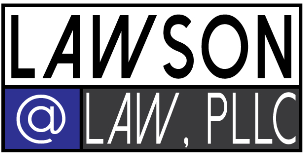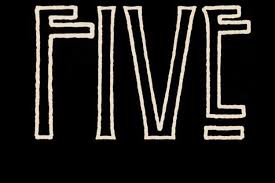Your credit report has five main sections. Error can occur in each. The errors in each section are of different type and require different means and methods to correct. At Lawson at Law, PLLC we know how to identify and fix errors in all sections of your credit report.
I. Personal Information
The personal information section often appears at the beginning of a credit report. The information in this section almost always contains some sort of error or incomplete information. Personal information includes names, name variations, addresses, and employers. Creditors use the information this section to hunt you down.
Credit reporting agencies gather and report this information directly. Errors in the personal-information section are usually these easiest to correct. But these errors seldom hurt your credit score or your ability to obtain credit. To correct this information, you need to directly dispute it with the credit reporting agencies.
II. Accounts
The account section of your credit report contains your credit history. Both open and closed accounts appear in this section. Often this section is separated between positive and negative accounts. Account information is furnished by subscribers (creditors) that pay the credit reporting agencies to report this information. A variety of errors can occur here, including:
- Incorrect payment histories.
- Erroneous late payments.
- Wrong number of days a payment has been late, usually appearing as 30, 60, 90, or 120 days or more late. Any payment history showing a late payment of 90 days late or more is counted a “severe delinquency,” which has a substantial negative effect on your credit score.
- Incorrect bankruptcy information.
- Incorrect drop-off dates, e. the date that a negative account will be removed from your credit report
- Accounts that are not yours arising from identity theft or merged reports, e. information that belongs to someone else appearing on your credit report.
To correct errors in account section of your credit report, it is critical that you dispute the information with the consumer reporting agency reporting the information. This is the only way to trigger a furnisher’s liability under the Fair Credit Reporting Act (“FCRA”).
III. Collections
Anything appearing in this section of your credit report is bad and will hurt your credit score. Information in this section is furnished by debt collectors. Medical debt appears in this section. If the information is false or if a debt collector fails to note that a debt has disputed, the debt collector may be liable for violations of the Fair Debt Collection Practices Act (“FDCPA”). The collection section of a credit report usually doesn’t contain a credit history. Rather, the information is limited to basics like the original amount of the debt, the current amount of the debt, the date the collection account was opened, and the last date that the debt collector furnished information about the account to the credit reporting agency. Often the information will include the name of the original or current creditor on the debt.
In order to correct errors in this section of the report, it is critical that you dispute the information with the consumer reporting agency reporting the information. This is the only way to trigger a furnisher’s liability under the FCRA.
IV. Public Records
Like collections, anything appearing in this section of your credit report is very bad and will substantially hurt your credit score. The main items of information in public-record section of a credit report are judgments, tax liens, and bankruptcies. The main types of errors in public-record section of credit reports arise from (a) credit reporting agencies failure to update judgments to reflect that they have been satisfied or vacated or to timely remove the information, (b) credit reporting agencies failure to update tax lien information to reflect that it has been paid or to timely remove the information, and (c) inclusion of someone else’s bankruptcy information on your credit report.
Credit reporting agencies gather and report this information directly. These errors can devastate your credit score, lowering your score by up to forty (40) point. In order to correct this information, you need to directly dispute it with the credit reporting agencies.
V. Inquiries
There are two types of credit inquiries: hard and soft. An inquiry occurs whenever a subscriber requests your credit report. As a general rule, hard-credit inquiries only occur when you apply for a loan or credit. Usually, you must authorize a hard-credit inquiry. (But be careful, the authorization is usually buried in the fine print.) Only hard credit inquiries are published to others who request your credit report. Hard inquiries could lower your credit score by a few points and may remain on your credit report for two years.
Soft inquiries occur when you pull your own credit report and when others pull report for almost reason other than a credit application.
You can dispute inquiries on your credit report directly with the entity that requested your credit report. (The inquirer’s address should appear in the inquiry section.) Or you can dispute inquiries with the credit reporting agencies. It is unlawful for someone to request your credit report without a permissible purpose. You can recover up to $1,000 in statutory damages for each impermissible request.
Multiple credit inquiries often arise from online loan applications and financing applications with car dealers. You can protect yourself from multiple inquiries, but you must be vigilant.

